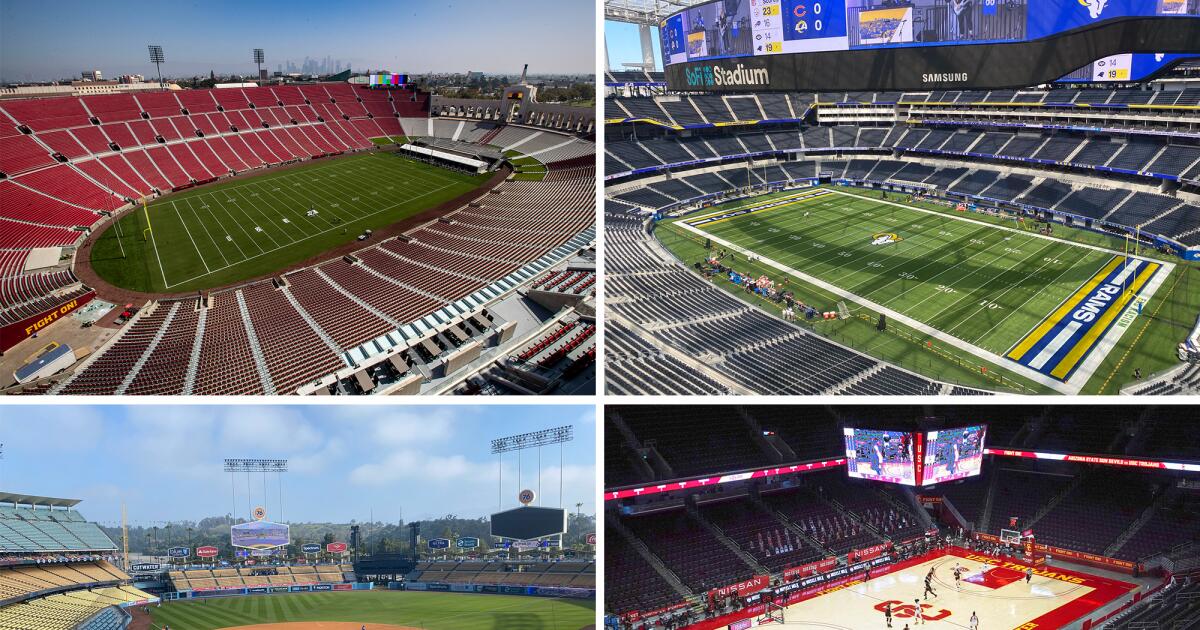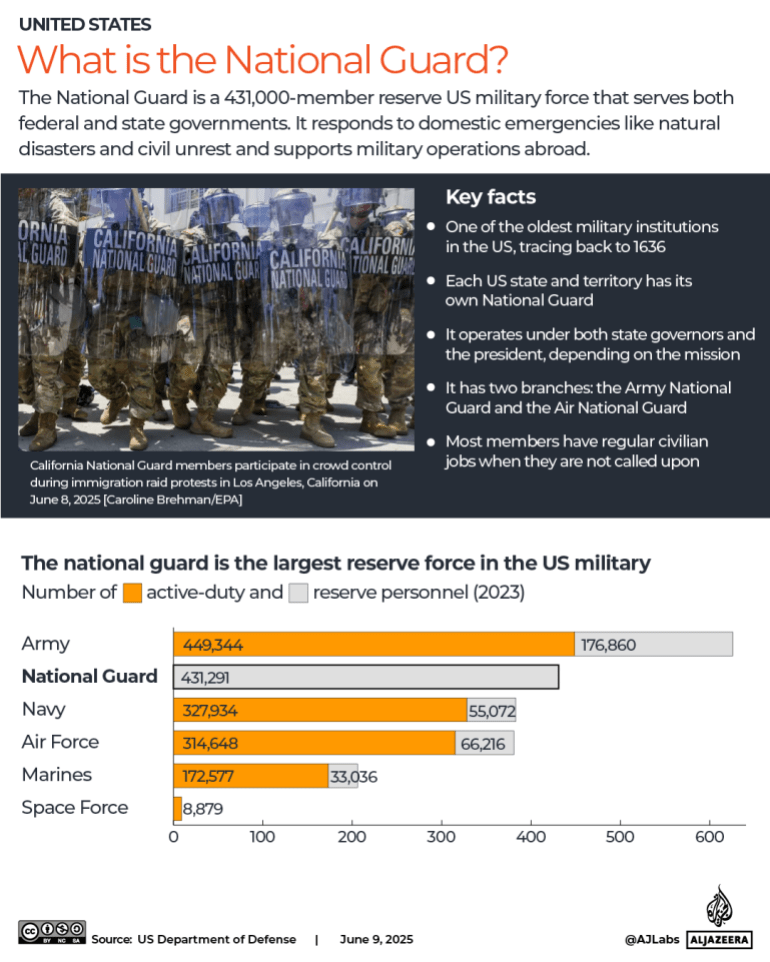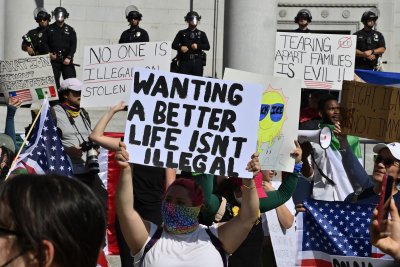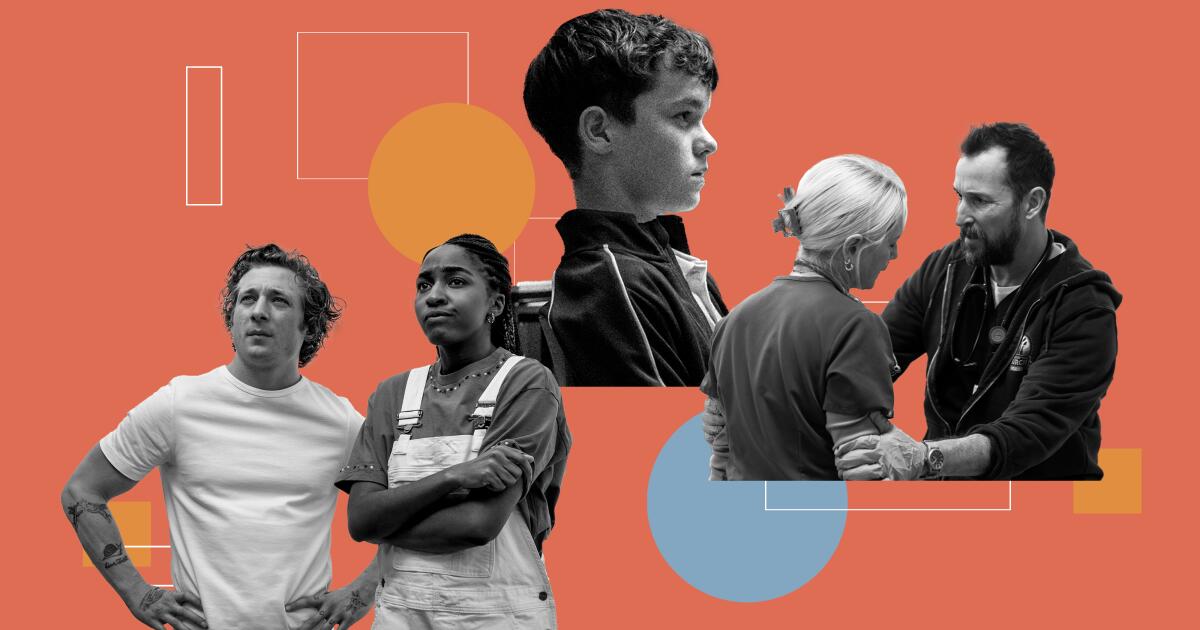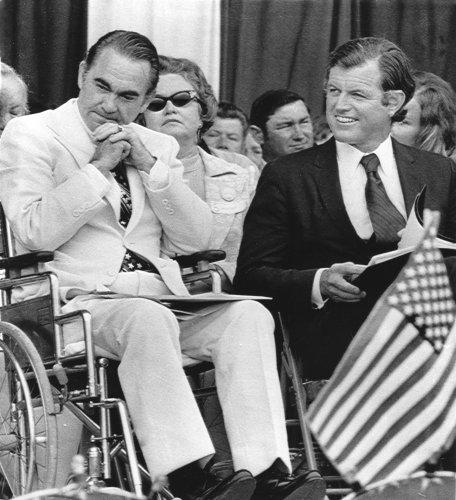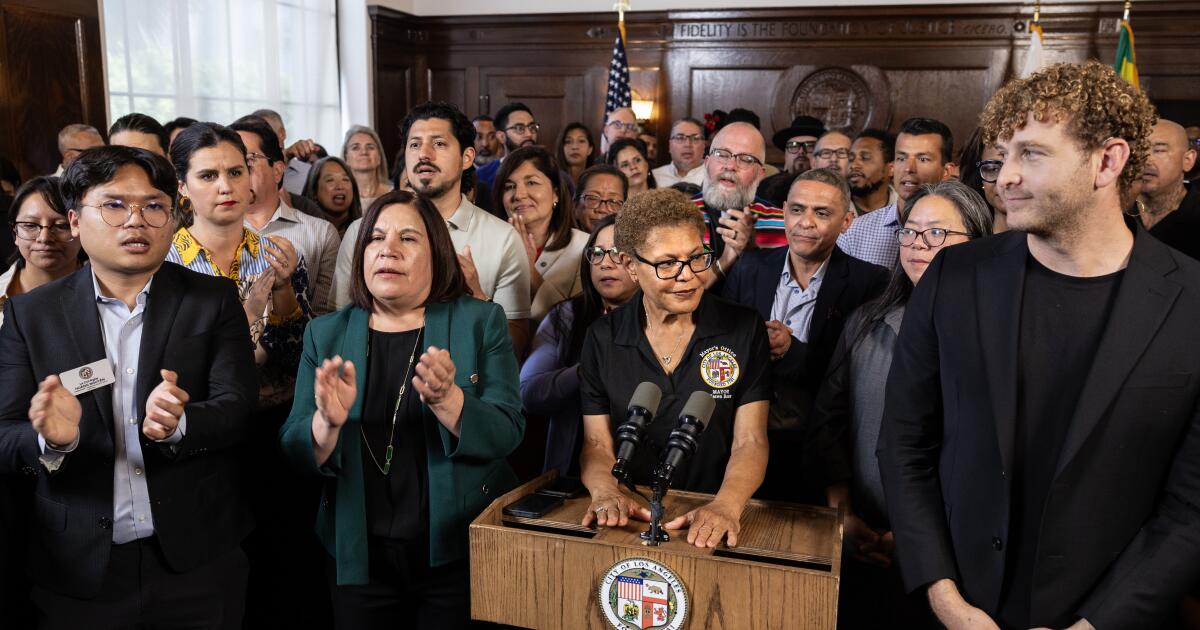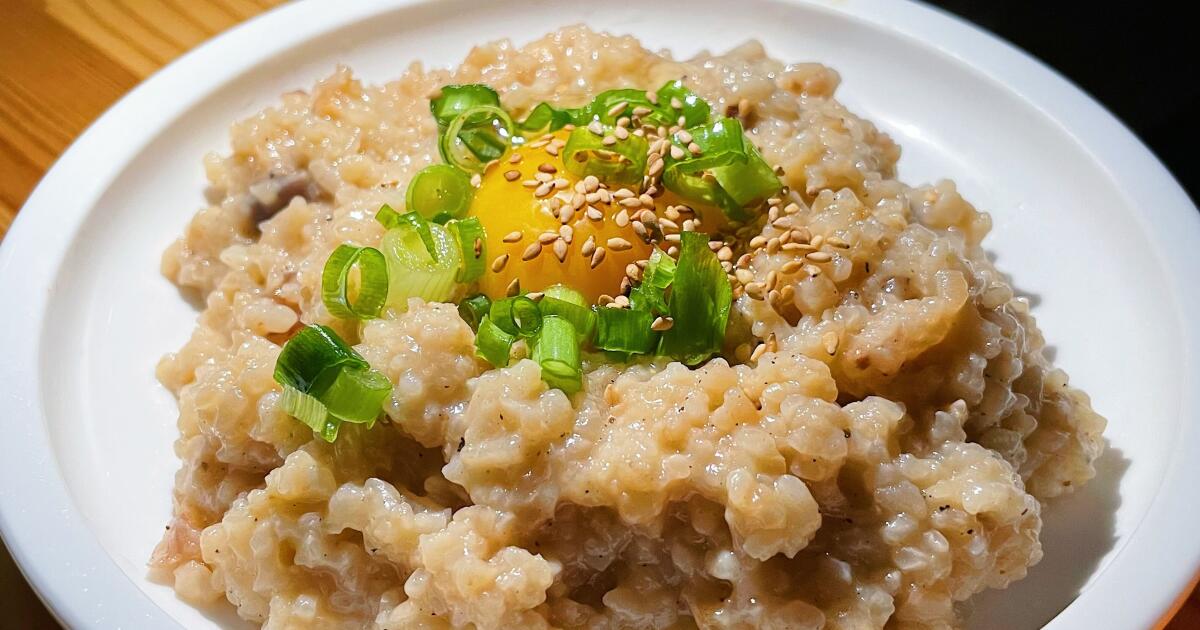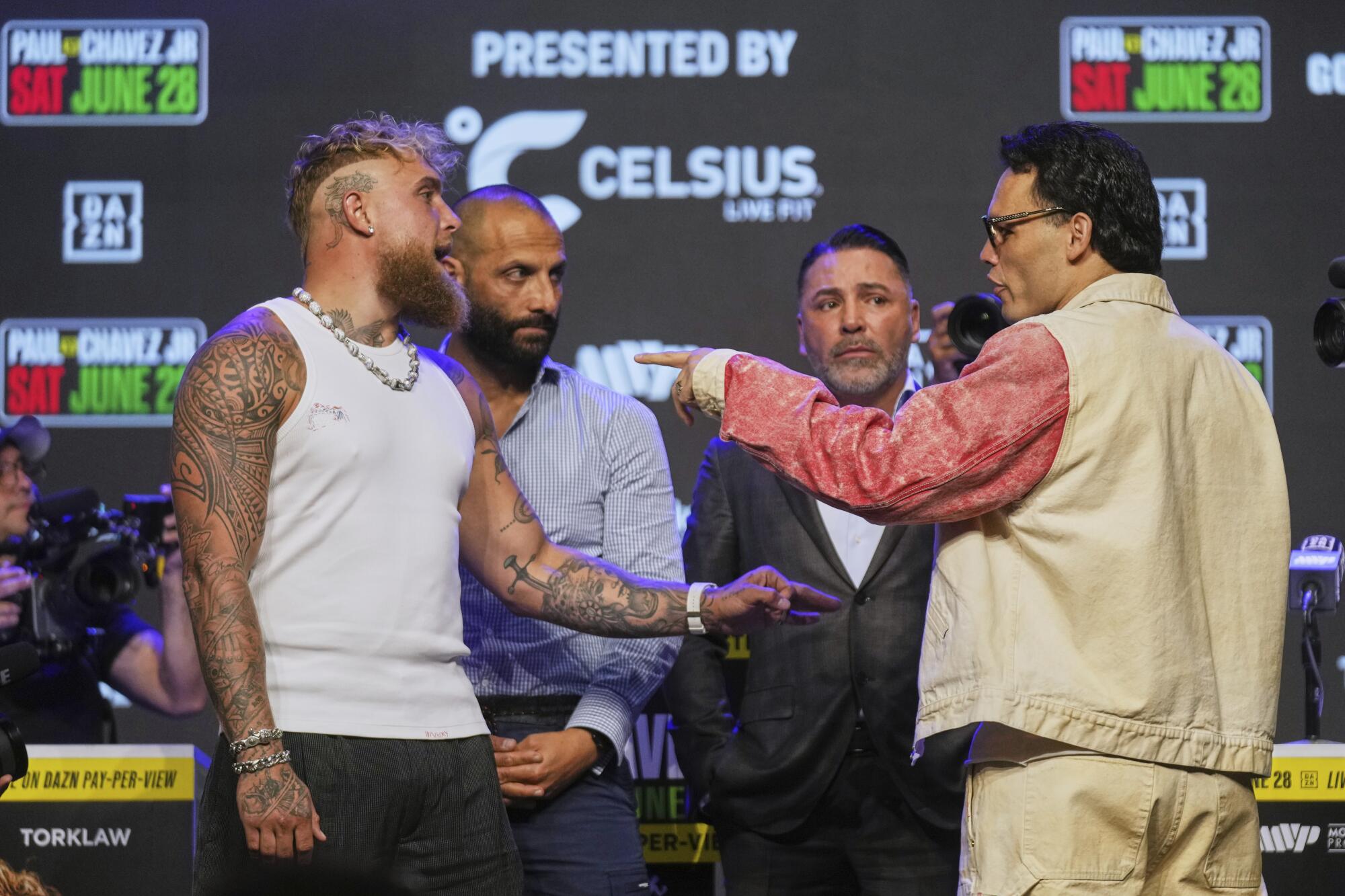Federal cuts leave Los Angeles County health system in crisis
Los Angeles County’s health system, which is responsible for the care of the region’s poorest, is careening toward a financial crisis because of cuts from a presidential administration and Republican-led Congress looking to drastically slash the size of government.
President Trump’s “Big Beautiful Bill,” which passed earlier this month, is expected to soon claw $750 million per year from the county Department of Health Services, which oversees four public hospitals and roughly two dozen clinics. In an all-staff email Friday, the agency called the bill a “big, devastating blow to our health system” and said a hiring freeze had gone into effect, immediately.
And the Trump administration’s budget for the next fiscal year will likely result in a $200-million cut to the county Department of Public Health, whose responsibilities include monitoring disease outbreaks, inspecting food and providing substance use treatment.
“I’m not going to sugarcoat it. I’m not going to say we survive this,” said Barbara Ferrer, head of the public health department, in an interview. “We can’t survive this big a cut.”
Both Ferrer and Department of Health Services head Christina Ghaly warned that the federal cuts will devastate their agencies — and the patients they serve — for years to come. Employee layoffs are likely.
In April, the White House announced it was ending infectious disease grants worth billions of dollars, including $45 million that L.A. County was supposed to use to combat the spread of measles and bird flu. California has joined other states in a lawsuit fighting the cuts, and the court has issued a preliminary injunction suspending the cuts.
A protest earlier this month in Anaheim, co-led by the California Nurses Assn., called on Rep. Young Kim (R-Anaheim Hills) to vote against President Trump’s spending bill.
(Allen J. Schaben/Los Angeles Times)
This month, the county public health department lost another $16 million after Trump’s bill cut funding for a program educating food stamp recipients about how to buy healthy meals.
And there’s more to come. The Trump administration’s proposed budget for 2026 will be the biggest blow yet, Ferrer warned, yanking $200 million from her department — a 12% cut.
“I’m old. I’ve been around for a long time,” said Ferrer, whose work in public health dates back to the Reagan administration. “I’ve never actually seen this much disdain for public health.”
Ferrer said the cuts mean she no longer has enough money for the county’s bioterrorism watch program, which monitors for outbreaks that might signal a biological attack. Soon, she said, county officials may have to stop testing ocean water for toxins year round, cutting back to just half the year.
“Like, you want to swim? You want to know that the water is safe where you swim, then oppose these kinds of cuts,” she said. “That affects everybody who goes to the beach.”
L.A. County Public Health Director Barbara Ferrer said she is bracing for $200 million in cuts to her budget.
(Al Seib/Los Angeles Times)
Layoffs are likely, said Ferrer. About 1,500 public health staffers are supported through federal grants. More than half the federal money the department receives is funneled to outside organizations, which would likely need to make cuts to stay afloat.
A similarly grim cost analysis is underway at the county Department of Health Services, where executives said they expect to lose $280 million this fiscal year because of the bill.
“I can’t make a promise that we will be able to avoid layoffs because of the magnitude of the challenges,” said Ghaly.
Ghaly said the bill slashed the extra Medicaid money the county typically gets to cover care for low-income patients. They expect many patients might be kicked off Medicaid because of new eligibility and work requirements. The federal government is pulling back on payments for emergency services for undocumented people, meaning the county will have to foot more of the bill.
The White House did not respond to a request for comment.
Department of Health Services officials said they expect to lose $750 million per year by 2028. By then, the agency’s budget deficit is projected to have ballooned to $1.85 billion.
In an attempt to pump more cash into the system, L.A. County supervisors voted on Tuesday to increase a parcel tax first approved by voters in 2002, which is expected to raise an additional $87 million for the county’s trauma care network.
After a long debate Tuesday, Supervisors Holly Mitchell and Lindsey Horvath worked to direct $9 million of the parcel tax money to Martin Luther King Jr. Community Hospital, a private hospital that serves as a critical safety net for South Los Angeles residents who would otherwise find themselves in a medical desert.
Without that cash infusion from the county, the cuts in Trump’s bill would have put the hospital at risk of closing, since the majority of patients in its emergency room are on Medicaid, said Elaine Batchlor, Martin Luther King’s chief executive officer.
“If they’ve lost their Medicaid coverage, we simply won’t get paid for those patients,” she said.
Dr. Elaine Batchlor, chief executive of MLK Community Healthcare, said her hospital was hanging by a thread financially. Then came more cuts.
(Francine Orr/Los Angeles Times)
Martin Luther King replaced a county hospital that closed after losing national accreditation in 2005 because of serious medical malpractice, landing it the nickname “Killer King.”
“The fact that that hospital closed in the first place I think is criminal, and I intend to do all I can to protect the integrity of the services,” said Mitchell, whose district includes the hospital and who pushed for it to get a cut of money from the parcel tax increase.
Local health providers said that changes at the state level have created additional uncertainty. The state budget for this fiscal year freezes enrollment in Medi-Cal, California’s version of Medicaid, for undocumented immigrants ages 19 and older starting in January. Medi-Cal recipients ages 19 to 59 will have to pay a $30 monthly premium beginning July 1, 2027.
“Most families [we serve] are making about $2,400 to $2,600 a month. They’re going to have to choose between paying their Medi-Cal fees for a family of four — that’s $120 a month — or paying rent or paying for food,” said Jim Mangia, head of St. John’s Community Health, who said the cuts will disrupt care for tens of thousands of low-income residents.
The St. John’s clinic, which gets most of its revenue from Medi-Cal reimbursements, serves more than 120,000 patients a year, most of whom live below the federal poverty line.
If the clinic doesn’t find a way to replace the lost revenue, Mangia warned, services will have to be reduced. The clinic recently started treating immigrant patients in their homes after realizing they had been skipping appointments because they feared being arrested by federal immigration agents.
“Then what we’re looking at is closing several health centers,” said Mangia. “We’re looking at laying off hundreds of staff.”
At Venice Family Clinic, a community health center that serves nearly 45,000 patients annually, 80% of patients rely on Medi-Cal. Roughly half the clinic’s revenue comes from Medi-Cal reimbursements.
Dr. Mitesh Popat, a family physician and head of the clinic, said that federal policy changes — especially more frequent paperwork and added work requirements — will likely push eligible patients off of Medi-Cal. He said the clinic is exploring ways to expand support for patients to navigate the paperwork and keep their coverage.
“This puts a bunch of barriers in the way of people who already have enough challenges in life,” Popat said. “They’re trying to make it, trying to survive, trying to put food on the table.”




